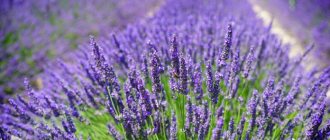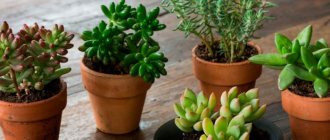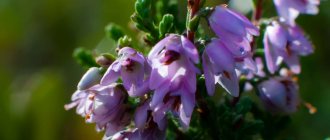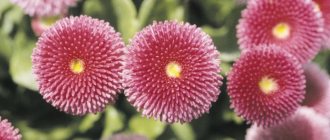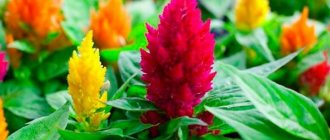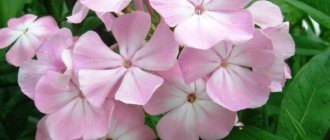Description of the plant
It reaches approximately 80 cm in height. The plant loves open spaces that abound in sunlight: forest edges, clearings, meadows (regular and subalpine). Its natural habitats are Eurasia, Asia Minor and the Caucasus.
In the United Kingdom and the States, these flowers are actively cultivated, and they are used by both amateur gardeners and owners of large agricultural complexes.
The flower is resistant to diseases, frosts, pests and is quite unpretentious: it does not require constant care. The plant attracts bees to the site because it is a honey plant, which is great if there is an apiary nearby.
Astrantias are also loved by florists because they retain their fresh shape for a long time and look great when making dry bouquets.
The plant blooms profusely from June to early autumn
Description of appearance
Calibrachoa ampelous flower: description and care
The perennial plant belongs to the Apiaceae family. It has bright flowers with amazing shapes and mesmerizing shades: white, red, pink, purple and lilac. Sometimes colors are combined in one bud.
Plant characteristics:
- Straight branched stems 15-90 cm in height.
- A small number of leaves that gather in a rosette at the root.
- Spreading bushes (in wild varieties), reaching 50 cm in diameter.
- Easy to grow, tolerates wintering without complications.
- Flowering lasts 1.5 months, from June to August, sometimes also in September.
- The inflorescences are collected in umbrellas from three to five centimeters.
- The color comes with a border or veins.
- The fruits are two-seeded.
- Powerful, compact rhizome.
Types and varieties of astrantia
Thanks to the work of breeders from different parts of the planet, many species and varieties of crops have appeared. Its flowers can be of various shades, and its leaves can have bizarre shapes.
Flowers reproduce by seeds, so it is important to collect them while they have not yet fallen, but are already fully ripe. To do this, sometimes small bags are put on the flower stalks and tied under the sepals.
Some gardeners cultivate not only the species listed below, but also Bavarian, three-cut and hellebore. They are more whimsical, so they are not so popular.
Astrantia major
It grows up to 80 cm and is characterized by small flowers (about 5 cm in diameter) of different colors.
But its leaves are large and fleshy. There are several popular varieties of this species:
- “Moulin Rouge”, which has ruby peduncles and gradient sepals (transition from burgundy to black). This variety is best planted in sunny, open areas.
- 'Ruby Wedding' is a shade-loving variety with scarlet flowers.
- "Claret" is distinguished by wine-colored flowers. The petals are bordered by translucent wrappers. The bush grows best in shaded areas.
- “Prima Donna” is an unpretentious variety, unlike those listed above. Grows well in both shade and sun. Its flowers are distinguished by their deep red color and white-pink sepals.
- "Lars" is characterized by soft pink flowers. Grows best in the shade.
- “Venice” is distinguished by a color similar to garnet. It reaches its peak of flowering in sunny areas. 'Sunningdale Variegata' has flowers that resemble apple blossoms: white with a slight hint of pink. The bush grows best in the shade.
- 'Rozensymphony' has bright pink flowers edged with white sepals. It is better to plant it in the light.
- "Rosea" differs from all others in its leaves, as they are covered with small spots. It is the shortest of all varieties: about 60 cm in height, but it has bright pink flowers and grows well in the sun.
- "Snowstar" or "snow star". Named for its bright white color, which turns grassy green on the sepals. Looks beautiful in dark places, as it creates the feeling that the flower is glowing.
- "Abbey Road" is distinguished by a bright fuchsia color that fades to black. The colors are reminiscent of the emo subculture. It grows well in the sun.
Astrantia large is the predecessor of all breeding research, so if you collect the seeds and plant them in the soil next year, the flowers may change color. Blooms best from July to August.
Astrantia maxima
This species is characterized by a powerful rhizome, thanks to which the bush can reach 90 cm in height. The inflorescences themselves are pastel pink. The diameter of the flowers is not inferior to large astrantia: 7 cm. Its leaves are small and quite sparse. Flowering occurs from mid-August to mid-September.
Astrantia minor
It’s not for nothing that they call her small. The flowers grow up to only 3 cm in diameter. The bush itself can be up to about 70 cm in height. It is distinguished by a huge number of white flowers with long, curling stamens. Its peak flowering occurs in July and August.
Astrantia carniolica
Small umbrellas are painted white. The sepals are quite small, like the flower itself in diameter (about 3 cm). The most common variety among agronomists is “Rubra,” whose flowers are deep purple. Its flowering occurs in late spring and ends in August.
general information
Astrantia is also called starwort, and everything instantly becomes clear if you look closely at its buds. This is an umbelliferous herbaceous plant distributed throughout Europe. It has been cultivated in different countries for about 500 years, and this also says a lot!
Large carved leaves remain decorative throughout the season, regardless of flowering. Those same unusual inflorescences are, in fact, balls of thin small flowers in a colored leaf wrapper.
Astrantia remains decorative regardless of the age of the bush. It is also an excellent honey plant. The flowering season is in summer. The height of the shoots varies from 15 to 90 cm, but they are always straight and slightly leafy.
Photo: zen.yandex.ua
Growing astrantia from seeds
Astrantia can be propagated either vegetatively (by dividing the rhizome) or using seeds. The latter option is much more economical and less energy-consuming, but the first helps preserve the features of the species.
Sowing astrantia seeds in the ground
It is best to sow freshly harvested seeds in the fall, before the onset of winter. In the spring you will just need to thin out the seedlings and care for them as usual.
Sometimes the bush is specially fenced with a net to control the growth of the bushes.
Sowing astrantia seeds for seedlings
You can, of course, grow seedlings. To begin with, immediately after the autumn harvest, they must be placed in a cool room for 2-3 months. It is necessary to create an imitation of weather conditions, which in botany is called “stratification”.
Afterwards, they need to be planted in small containers, sprinkled with soil on top, covered with glass or film and put in a warm and well-lit place (temperature should be 20-25°C). When the first shoots appear, the cover must be removed.
Reproduction
Astrantia is propagated by dividing bushes in spring or autumn and by seeds. Sowing by seeds is very effective, but plants obtained from self-collected seeds may not reproduce the varietal characteristics. Therefore, it is better to reproduce by dividing the overgrown maternal samples. Rejuvenation of old specimens by division is carried out every 4 years.
Astrantia often disperse on their own. Signal to collect - the seeds are almost scattered. You need to place a bag under the inflorescences and tilt the flower stalks. Then the seeds fall out easily. Empty inflorescences are left on plants; they will decorate the garden in autumn and winter, rustling gently in the wind.
Photo. The seeds are ready for harvest. Dry inflorescences with seeds.
Most gardeners believe that propagating astrantia by seeds is not easy. The seeds must be very fresh and sown immediately after ripening, as they quickly lose their viability. To produce 1000 plants, 10 g of seeds are needed.
If after sowing the astrantia seeds do not germinate, the pots are placed in a cool place to put them into a dormant state. Then, as soon as the first leaves appear, you need to move them to a warm place.
Temperature conditions for germinating astrantia seeds and growing seedlings
| Seedling age | Temperature, ° C |
| 2-4 weeks after planting | 18-22 |
| Next 4-6 weeks | 0-4 |
| After 6 weeks the temperature is gradually increased | 10-13 |
After this period, the seeds germinate in about 4-6 weeks.
However, the ease of crossing varieties and the difficulty of maintaining variety purity cause many problems and may not satisfy discerning gardeners. The varieties "Shaggy" and "Buckland" do not produce seeds.
Caring for astrantia seedlings
It is necessary to loosen the soil and water regularly. Seedlings feel good at a temperature of 25°C. The room should be well lit (it is not recommended to turn off the lamp even at night).
It is important to avoid drafts so that fragile sprouts do not freeze.
Seedlings need to be constantly thinned out. This reduces competition among plants, and they grow much faster.
Planting astrantia in open ground
Before planting in open ground, you need to prepare the sprouts for the difficult conditions of the outside world. To do this, they need to be taken out to the balcony or outside every day so that they can breathe fresh air and soak up the sun's rays. It is better to do this in the morning or evening.
It is not recommended to take the sprouts out into the fresh air at lunchtime. This may harm them.
Also, before planting in open ground (about a month and a half in advance), the plants are planted in separate small pots - they are planted, which stimulates growth. It is necessary to continue to take them out into the fresh air.
The seedling is quite unpretentious, so it can survive in any soil. But it is still advisable to fertilize the soil with humus or mineral salts.
It is advisable not to plant astrantia in lowlands so that in the spring melt water does not limit the access of oxygen to the roots. Because of this, the plant may die.
After the seedlings have grown stronger, they begin to be planted in open ground.
When to plant
The crop is best planted in late May or early June. It is advisable that there are no frosts during this period so that the plants do not die. It can also be planted in the fall after collecting the seeds.
How to plant correctly
Before planting, you need to familiarize yourself with the characteristics of each variety or species. Some like shaded areas and some like full sun. Plants are best planted at a distance of about 40 cm from each other. The hole should be small: approximately the same as it was when growing seedlings.
The soil around the seedlings must be compacted and the plants must be watered abundantly. Astrantia is a perennial, so the first flowers will appear on it after 3 years.
Agricultural technology
Growing from seeds
Eustoma flower
Growing astrantia from seeds at home requires special attention and control. This crop reproduces well by self-seeding, but does not retain all its characteristics. The cultivation process is easy, but some guidance is needed.
Seeds can be sown:
- In the fall, when the flowers are collected, in the spring they sprout on their own. This method can only be used for personally collected seeds.
- Store-bought seed is sown only in spring.
What do the seedlings look like?
Recommendations after purchasing seeds in the store:
- Seeds need to be stratified, that is, cooled. It is enough to place them in the refrigerator for several weeks.
- Planting to obtain seedlings is carried out in early spring, in March. The seed is sown shallowly in loose soil and tried to be kept at a temperature of 20-23 degrees. The top is covered with a film, but the moisture is retained during watering. After a few weeks, shoots appear, so the film can be removed and the shoots themselves thinned out.
Additional Information. The process of keeping at low temperatures naturally occurs when sowing in the fall, but under natural conditions. Sometimes the packaging of store-bought seeds may indicate that the seeds are already stratified.
What is needed for planting
When planting and caring for astrantia flowers, it is important to adhere to the main rule - light soil, rich in oxygen.
For planting you need:
- Prepared stratified seeds,
- Loosened light soil,
- The room temperature after planting is not lower than 20-23 degrees before germination and seedlings appear.
An important factor in the rapid development of shoots is the presence of sunlight.
Growing seedlings
Seedlings begin to grow quickly if all rules are followed. After two weeks, the seedlings can already be thinned out. While the seedlings are actively growing, they need to be constantly watered and the soil loosened. Under no circumstances should drafts be allowed.
If small leaves appear on the seedlings, you can pick up the plant and plant it in small pots with the same soil in which the seed was planted.
Note! Before planting a crop in the garden, it is worth starting to harden it. The process is very simple: take the potty outside for a “walk” for a few minutes. Gradually lengthen the time spent in the fresh air.
Step-by-step garden planting process
Astrantia plant planting and care in open ground will not cause any particular problems even for a beginner. The culture is very close to the field species.
Planting is carried out at the end of May or beginning of May, when the seedlings are already actively developed. By the time frosts arrive, the crop's rhizomes will have become stronger and will be able to withstand frost. Already formed strong seedlings are planted. They will produce their first flowers only after 2-3 years.
Scheme:
- The soil is being prepared. It should be light, loose, without loam or stagnation. It is possible to add black soil if the soil is acidic or too alkaline.
- Small holes are dug into which a drainage layer of sand and organic fertilizers (for example, household waste, plant tops) is added.
- The holes are watered abundantly with water and rhizomes are planted.
- The soil is compacted tightly and watered again.
- Additionally, the soil can be mulched with hay or straw.
Care
Astrantia requires constant but simple care.
Watering mode
Watering should be regular and of high quality. In hot summer times - once or twice a week, in autumn - once every 10-15 days. Rain or settled water is used. As a supplement, it is allowed to water the plant with decoctions of chamomile, sage, nettle, dandelion or infusion of egg shells. Eggshells also help in the fight against mole crickets.
Top dressing
Fertilizing is allowed, but you should not overdo it. The crop grows well even without fertilizers.
Phosphorus-potassium fertilizer
Before the buds begin to grow, nitrogen fertilizers are introduced, and after flowering, phosphorus-potassium fertilizers are introduced. Follow the instructions strictly.
If astrantia blooms on mineral-poor soil, then it is possible to introduce additional fertilizing with phosphorus and potassium in mid-summer. Liquid fertilizers are very good for crops. When using dry fertilizing, be sure to water thoroughly after applying it.
Care during the flowering period
The gardener needs to ensure that the soil of the astrantia does not dry out. During prolonged drought, the plant will also develop, but flowering will suffer. Most likely, under such conditions, if it blooms, it will only bloom once. Therefore, if you want to re-bloom, you should water the crop abundantly.
It is also important to constantly loosen the soil and remove all weeds that interfere with the flowering and development of the crop. Mulching with peat or humus helps to control weeds.
If faded inflorescences appear, they must be removed immediately. After the first flowering, it is better to cut off all the flowers so that the second ones bloom again. This procedure will help the bush look fresh and well-groomed.
Care during the rest period
When astrantia flowers have finished blooming, they should be cut off almost at ground level. This will make it easier for the plant to survive the winter. You can also add fertilizer to fill the crop with essential minerals. Watering becomes less frequent - up to once every 10 days.
Additional Information. In autumn they begin to collect seeds. To do this, take gauze bags and cover those flowers where the seed does not spill out onto the ground. After the inflorescences have dried, they are cut off and dried in a dry, well-ventilated area. Then the seeds are shaken out and placed in paper bags for further storage.
Preparing for winter
In general, astrantia easily tolerates frost. But, if these are young shoots, it is better to additionally protect them by mulching with sawdust or dry leaves.
There are many varieties of incredibly beautiful plants. At the same time, choosing your favorite will not be difficult. The star flower will subsequently delight everyone with its blooming and will become the highlight of any flower bed.
Caring for astrantia in the garden
If precipitation falls regularly, then special care for the bush is not needed. If the summer is dry, then constant watering by sprinkling is important (about once a week). After it, you need to loosen the ground around the bush and remove all the weeds.
Astrantia blooms once per season, but if you feed it with humus, compost, potassium magnesia, potassium nitrate, that is, mineral salts, and mulch (cover the soil with sawdust), then it can bloom the second time.
To achieve beautiful and lush flowering, you can form bushes, that is, remove unnecessary leaves and stems, and replant the bush to a new location every 5 years.
The gardener should choose the right site on which astrantia will subsequently grow.
Growing conditions - soil, place in the garden
Astrantia flowers love to grow in mixed beds and grow well in the sun and shade. It is important that the soil is never dry. They like constant moisture and fertile soil. The plant prefers partial shade. Also tolerates sunnier positions, but only if provided with constantly moist soil (but not stagnant water near the roots).
When planning to plant astrantia, you need to carefully dig up an area with well-decomposed compost. These plants like an alkaline pH and will bloom well in such a location. The plant needs fertile, humus soils, pH 5.6–6.8.
Bush propagation of astrantia
Astrantia is best propagated vegetatively (by dividing the rhizome or the bush itself). It is important to do this before the first leaves appear. This happens as follows: the bush is dug up, the root is cut into several parts, which are then planted in open ground.
After a few weeks, small shoots appear. The holes need to be made small and fertilizers should be added to each: humus or mineral salts.
In the same way, astrantia is propagated in the fall, when the plant has completely bloomed. The plants, however, will bloom only after 3 years, so you will have to be patient! Mature but non-flowering bushes need to be watered and fertilized on the same basis as flowering ones so that they do not die.
Astrantia is best propagated vegetatively
Astrantia – photo
At first it may seem that astrantia looks eccentric and unusual. But this is only the first impression, because it is enough to look closely to be imbued with its beauty!
Photo: flos.ru
Photo: cultland.ru
Photo: m.nn.ru
Photo: domashniecvety.ru
Photo: domashniecvety.ru
Photo: rassadovo.ru
Photo: fotokto.ru
Photo: distano.ru
Photo: windstonefarm.co.za
Photo: vsesorta.ru
Photo: agro-ra.ru
Photo: astrussia.com
Photo: romashkino.ru
Photo: rastenieinfo.ru
Photo: kartoska.ru
Photo: commons.m.wikimedia.org
Photo: emeraldplants.co.uk
Photo: botanichka.ru
Photo: abcogrodnika.pl
Photo: 2sotki.ru
Photo: na-dache.pro
Photo: flos.ru
Photo: cactusnik.ru
Photo: zen.yandex.ru
Did you like the post? Subscribe to our channel in Yandex.Zen, it really helps us in our development!
Pests and diseases of astrantia
The flower has a very powerful immune system, but there are still diseases that can undermine it. This happens due to improper care. For example, too frequent and abundant watering (fungus may appear), lack of mineral salts. A flower can become infected with a fungus even if other plants in the garden are affected.
If you do not fertilize astrantia for a long time, the leaves may turn blue or get an edge burn, which is a sign of a lack of potassium or phosphorus. In this case, you need to buy mineral salt, which the plant lacks, and fertilize the soil around the flower.
If the bush is sick, then you need to treat it with chemicals. You can take the following: “Abiga-pik”, “Strobirulin”, “Acrobat MC”, “Aspirin-B” or “Glyokladin”. All drugs have a fairly wide range of applications and help fight fungus.
If the bush is severely affected by the disease and it has almost completely rotted, then it must be dug up, burned and, if possible, disinfected the soil around it so that the infection does not spread to other plants.
There is another enemy of astrantia - the naked slug. It must be removed from the flower (you can collect them in a jar) and destroyed. If there is an invasion of slugs, then the drug “Thunder” can help.
Types of astrantia
The genus Astrantia is represented by several species - there are about 10 of them. In addition, thanks to breeders, many varieties of different colors have been developed - from white to dark purple. The centers can be the same color as the flower or a contrasting shade.
Some varieties are distinguished by variegated leaves, which makes the plant decorative even without flowering. You can usually see pronounced white or yellow stripes along the edges.
Astrantia differ in height. Compact dwarf varieties grow up to only 15 cm, tall ones can reach 90 cm.
Astrantia in the landscape
The plant is adored by landscape designers, because it is beautiful throughout its flowering period. It looks aesthetically pleasing in city flower beds (it is only important to remember that it can propagate spontaneously by rhizomes) and is combined with other tall plants.
The flower is especially suitable for an alpine garden, as it resembles mountain edelweiss growing on stones.
Flowerbeds that combine several varieties of astrantia look original and interesting: dark red and pale pink.
Description of astrantia with photo
The plant received its generic name for its appearance and comes from the Latin word “aster”, which means “star”. The star-shaped bracts that radiate around the cushion-like flower heads really do resemble stars.
The height of polygonum varies from 45 to 70 cm. Small but numerous flowers, depending on the variety, can have different shades of white pink, cream, lilac, red, burgundy and even purple, while the bracts and flowers often differ in color.
The flowers are located on the tops of thin but rigid peduncles with several sessile leaves. The perennial is a champion in terms of flowering duration, which can be admired from the beginning of June to the end of September.
Decorative allium in the garden
An additional advantage is the large, dark green, palmately divided, jagged leaves on long petioles, collected in a rounded basal rosette. Variegated varieties are distinguished by variegated foliage colors.
Variety "Sunningdale Variegated"
After planting, astrantia bushes grow quite quickly, forming dense, neat clumps that can grow in one place for 10-13 years without losing their attractiveness.
Planting astrantia
Compost and some half-rotted leaves must be added to the planting hole for astrantia; on wet soils, drainage must be provided at the bottom of the hole. In addition, when planting astrantia, it is recommended to add coffee grounds. This component will have a beneficial effect on the growth and development of astrantia, serving as a fertilizer and gently increasing the acidity of the soil. If astrantia is planted in a group, a distance of 30-40 centimeters is maintained between plants.
Astrantia planting material is planted in a permanent place in early May. Young rosettes are planted 2-2.5 centimeters below the soil surface, the roots are straightened and carefully lowered to the bottom of the planting hole. The cuttings are sprinkled with loose substrate and carefully pressed down (compacting the soil too tightly is not recommended), after which the plants need to be watered abundantly.
Given the increased demands on moisture levels, it will be useful to mulch freshly planted plantings to prevent moisture evaporation and crust formation. Peat, straw or pine bark can be used as mulch.
Astrantia carniolensis
A low-growing herbaceous species rarely grows above 50 cm. The stems are straight, branched, with numerous umbrella inflorescences with a diameter of 3 cm. The petals are light pink, fading to white. The culture is thermophilic. It grows only on fertile aerated soils. A cultivar adapted to temperate climate conditions is grown in the gardens.
Rumba
Rumba is the only variety of Carniolian Astrantia that is cultivated for design purposes. The species is light-loving and grows on moist soils. The bush is dense, forms numerous stems, branched in the upper part. The inflorescences are dense, 3 cm wide, light pink. The bracts are long, with a burgundy tint. Grows up to 80 cm, crown diameter is 50–60 cm.
The first buds of Rumba open in June; after removing the dry inflorescences, the cycle is repeated and lasts until the end of September
Use in landscape design
Astrantia forms successful combinations with fairly large flowers (for example, peonies). Looks great in mixborders.
It is used to create flower beds of continuous flowering, as it gets along well with perennials. The lacy leaves of the star go well with bright summer flowers.
From different varieties of plants you can create a very original separate flower bed. The landscape design of parks will certainly benefit from planting astrantia against a background of deciduous shrubs.
Scampston Walled Garden @ The Teddington Gardener, Pinterest
June in the Garden @ Mark, Flickr
As a rule, it is often used when designing:
- discounts,
- mixborders
- and different types of flower beds.
The ability to grow and bloom profusely even in shady areas makes it an excellent solution for planting under bushes or trees. Such solutions in landscape design allow you to create unusual compositions.
Low-growing varieties are often used to decorate rock gardens or rock gardens.
Where can I buy:
Application in garden design
Astrantia is planted solo and in groups, in flower beds and on lawns, in ridges and mixborders, as well as in borders along paths. This species is ideal for wellness gardens, and low-growing varieties are ideal for alpine slides.
Large astrantias look great in shady gardens thanks to their bright inflorescences. It is recommended to plant next to astilbe, hosta, lungwort, geranium, and cyanosis.
Try to place it near variegated heucheras, barberries or scumpia - and you will see how your garden star will shine with a new light and sparkle with unusual colors.
You can also learn more about general recommendations for caring for astrantia in the home garden.
And for the most curious, we suggest watching a video about Astrantia major https://www.youtube.com/watch?v=OLDTctxyCpo
Growing and care
Caring for astrantia does not require much time or labor, so it can be planted in a dacha where the owners come occasionally. The main points in care are watering, fertilizing, pruning and timely detection of possible problems and diseases.
Watering
Since the crop is drought-resistant, it does not need constant watering throughout the summer. It will only be needed in the event of a summer drought that lasts longer than three weeks.
Additional watering in care is necessary in cases where it is necessary to achieve re-blooming in August or September. Once a week will be enough to maintain high decorativeness.
Loosening
Loosening increases the permeability of the soil, which is very important for the star. It should be carried out after precipitation or after watering, when the top layer of soil dries out. You need to loosen to a shallow depth, since the root system can be located just below the surface of the earth. At the same time, weeds are removed.
Once the clumps form a continuous carpet, loosening will no longer be necessary, but weeds can still grow inside it. They must be carefully pulled out without affecting the foliage of the star.
Trimming
Cutting out wilted flower shoots is important for continued bud formation.
To form a stormy and lush wreath of inflorescences, experienced gardeners use the following technique: they cut off the first flower shoots after they appear in the spring. This guarantees the growth of the bush and continuous flowering until autumn.
Pruning allows astrantia to accumulate strength for the appearance of new flowers, rather than spending it on the formation and ripening of seeds.
Feeding
Astrantia's need for fertilizers is not very high, but the spring application of complexes containing phosphorus and potassium will increase the decorative value of the clump. You can water the soil with a fertilizer solution only after it is well moistened. Foliar feeding is also allowed, but only for flowers older than three years.
Preparing for winter
In October-November, all above-ground parts are cut off. Young plants are covered with spruce branches on top or covered with a layer of peat. In the spring, before the onset of warmth, the shelter must be removed. An adult starfish does not need shelter because it is resistant to freezing.
Possible diseases
Problems in caring for starweed appear extremely rarely, for which many gardeners value it. Occasionally, damage to foliage by slugs is observed, which actively eat greenery. This affects the appearance of the flower, since the decorative effect is sharply reduced. In the fight against slugs, manual collection is most effective. To finally defeat the problem, you can treat the area with preparations such as “Ulitsid”, “Thunder”, “Patrol” or “Anti-slug”.
Sometimes a reaction to waterlogging is possible in the form of darkening of the lower sheets. To combat this, it is necessary to loosen the soil around the clumps more often.
Care
This flower is quite light-loving , but can also develop well under tall trees, delighting with long and lush flowering. The more light the starfish receives, the brighter its umbrellas are colored.
The root system is quite compact, so for normal development it does not need too deep a fertile layer. Does not tolerate high sand content in the soil.
If astrantia lacks moisture during the season, it shortens the flowering period in favor of longer seed ripening. But in general, caring for this flower is very simple, although there are still a few secrets.
Read about Ficus Benjamin Natasha with us.
Caring for your house fern will be easier with these tips and tricks.
Learn https://sad-doma.net/houseplants/decorative-leaf/kroton/kodieum-razmnojenie.html how to propagate croton by cuttings at home.
